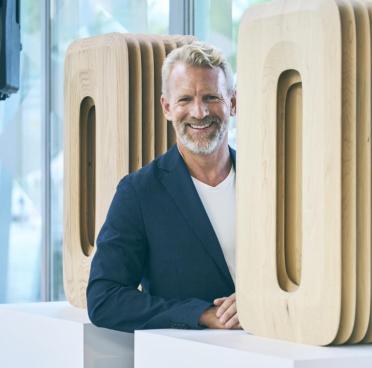Can we use American hardwoods outdoors?
It’s a common question in markets where American hardwoods are less well-known and it is especially relevant where indoor-outdoor living is so important, such as in India. However, before answering, I always ask my own series of questions first, as ‘outdoors’ can be interpreted in many different ways.
One side of a front door is outdoors and the same is true for window frames, while soffits are also outdoors, but in all these cases, there is likely to be some cover from full exposure to sun and rain and also no ground contact. In these cases, the species of wood used is far less important than the design. Minimizing direct exposure to the elements, reducing water and ground contact and allowing for expansion and contraction must all be considered. It is all too easy to rule out using a particular species of wood in a particular application, when actually the design itself might be the issue. Furthermore, weatherproofing treatments can also be applied, which will enhance the timber’s durability.
American white oak, for example, is often used to make windows and doors, with some manufacturers in Europe using it throughout their entire product range. There is at least one example in India of a manufacturer doing the same thing. Based in Gurgaon, Artius Interior Products have been making wooden window and door systems since 2011 for villas and bungalows all over the country, offering glued-laminated American white oak frames as part of their product range. In this case, good design, coupled with good technology and a proper understanding of the material has been the secret to their success.
Of course, certain species are more durable than others, giving them a higher resistance to the elements and improved dimensional stability, making them better suited to outdoor use. Teak is a fine example and centuries of use in India have demonstrated this, while other dense, tropical hardwoods have also been widely used in many extreme outdoor situations and even in permanent contact with water. None of the American hardwood species (in their natural form) can directly compare with teak, but some do have a greater degree of natural durability than others.
Perhaps most importantly, when using any wood species outside (even teak), a degree of weathering or degradation will need to be anticipated. Wood is a natural material and it responds to exposure to UV, humidity and temperature changes, changing color over time and developing surface checks or cracks.
When it comes to decking or outdoor furniture, American hardwoods may not be the best option, unless they have been treated specifically for this purpose. There is now increasing availability of thermally-modified American hardwoods, which, in simple terms, have been cooked to a high temperature, resulting in their increased durability and improved dimensional stability. This treatment is available in American ash, red oak, tulipwood and soft maple and the resultant material is ready to use in a range of outdoor applications, such as pergolas, decking, cladding and window louvres, as well as chunky-style furniture with full exposure to rain and sun.
Thermally-modified American hardwoods are being imported and distributed in India, most often being used in cladding and decking applications on private houses. Designer’s Arcade, based in New Delhi, have been doing this successfully for many years.
Another important consideration when using wood outdoors (and even indoors) is whether it has been seasoned properly. American hardwoods are used all over the world in a multitude of applications and in climates ranging from hot and dry to cold and damp. The key is that they are properly dried before they are shipped to their buyer, be they just down the road or on the other side of the world.
Drying of American hardwoods is a complex process, which has taken many years to perfect. A combination of air-drying and kiln-drying is used over a period ranging from a few days to many months, depending on the species and thickness of the sawn timber. The result is lumber that ranges from 7 percent to 10 percent moisture content, which ensures that it is as stable as possible and ready to use upon arrival at its customer. Side-stepping this process and importing American hardwood logs or lumber that has not been dried as a means of saving costs, is inviting a host of problems.
So, back to the initial question: can we use American hardwoods outdoors? The answer is yes, as long as we have a full understanding of the material we are working with and the correct way of using it.
